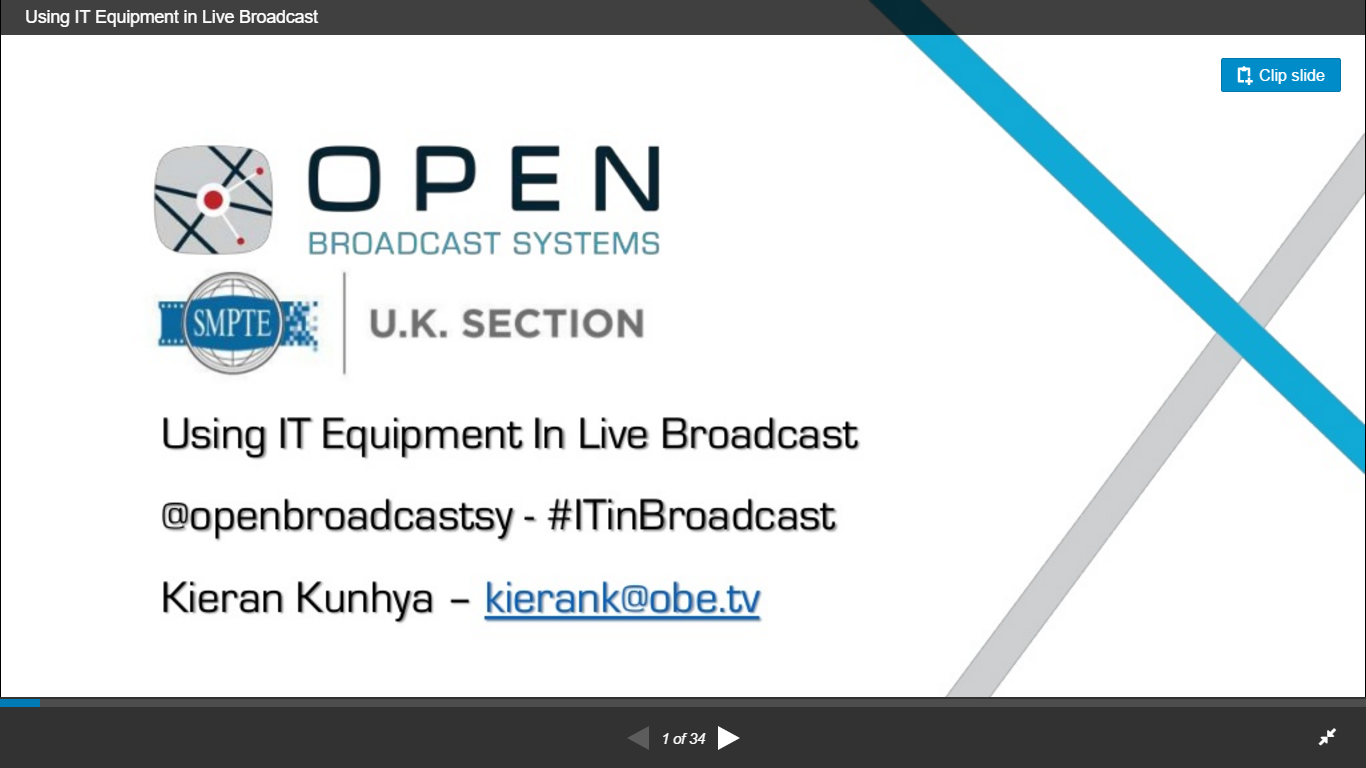Open Broadcast Systems teamed up with the Society of Motion Pictures and Television Engineers (SMPTE) UK Section to host an event looking at IT in broadcast. Being close to Christmas, it also featured mulled wine and mince pies, of course!
The main aim of the evening event was to tell the audience of broadcasters and manufacturers that broadcast data-centres can look exactly like an IT data-centre already, and work extremely well. Many people within this industry, especially the traditional broadcasters and manufacturers, find that hard to believe but actually an IT approach comes with a number of major advantages and is already being used for numerous broadcasts.

During my presentation, I tried to dispel a couple of myths. Firstly, there is a myth that IT equipment is too large and power hungry. Our colleagues at Sky News have installed numerous of our low power units in street furniture across London. They do encoding, decoding, and ASI processing all at the same time and are extremely useful when there is breaking news in one of the key locations across the city.
The second myth I dispelled was the opposite, that IT is not powerful enough. In actual fact the processing power available is quite simply huge and IT equipment easily enables high definition and multiple services.
I also talked about some of the technical details behind building high performance software for live television production, processing huge volumes of data. I also looked at how standards can be implemented in software, often requiring new approaches to writing applications.
I talked through a couple of projects we have handled, such as the One Show for BBC Scotland, live from the Edinburgh Festival, and a great deal of sports content. I also threw down a challenge to the industry – next I want to see longform content being delivered over cellular broadband networks at broadcast quality.


